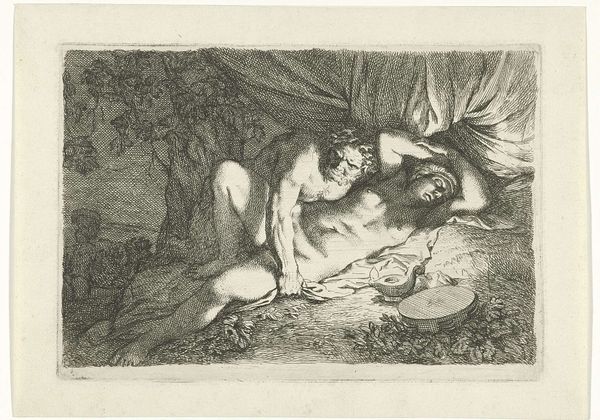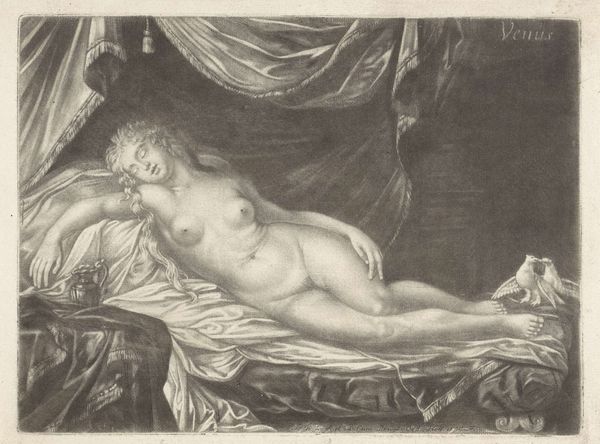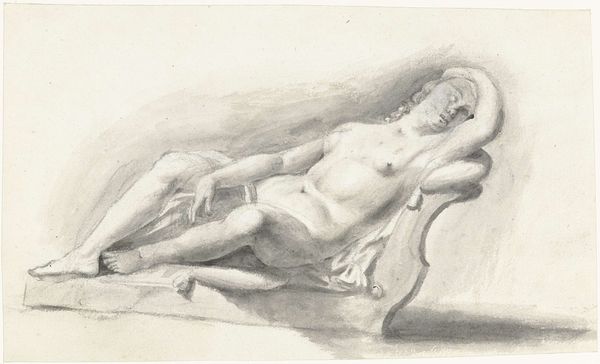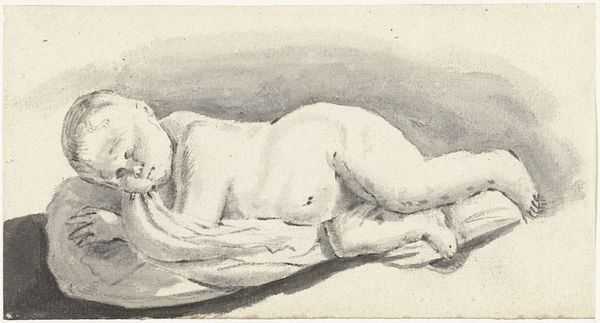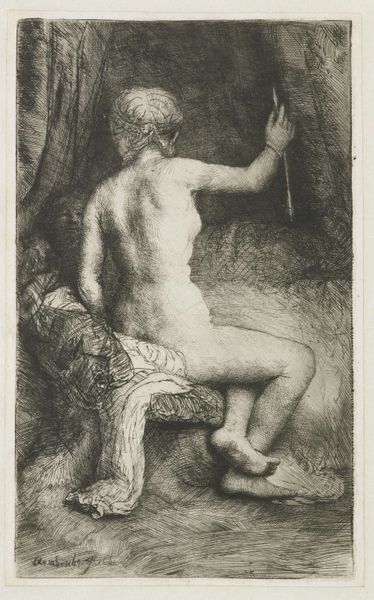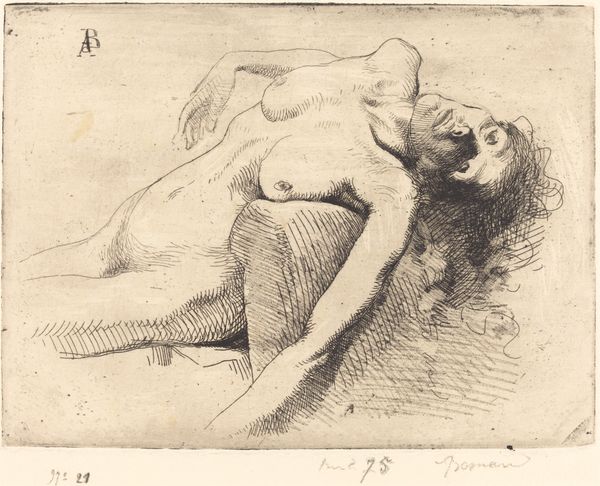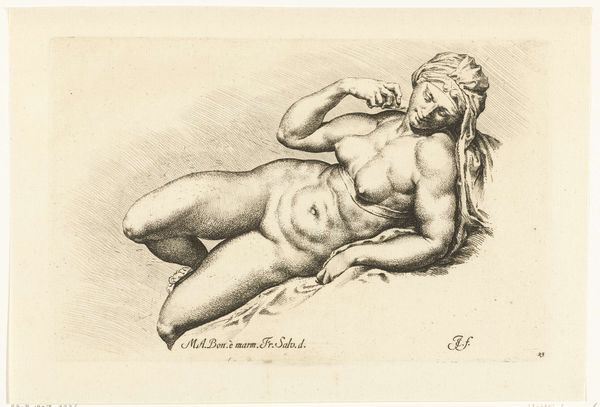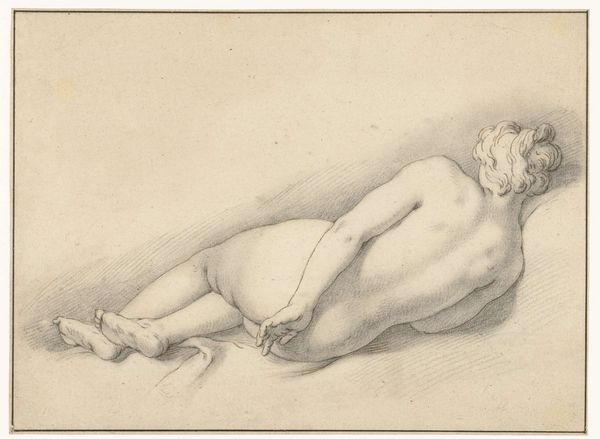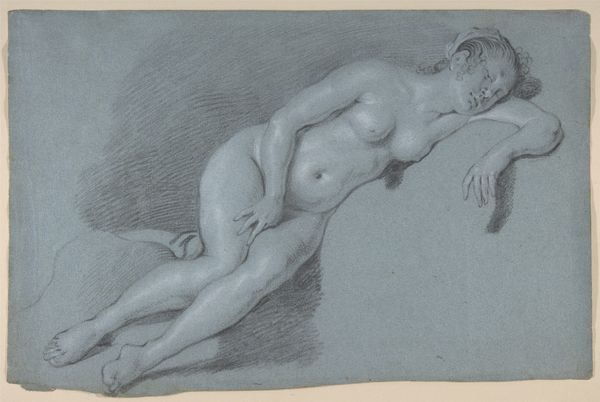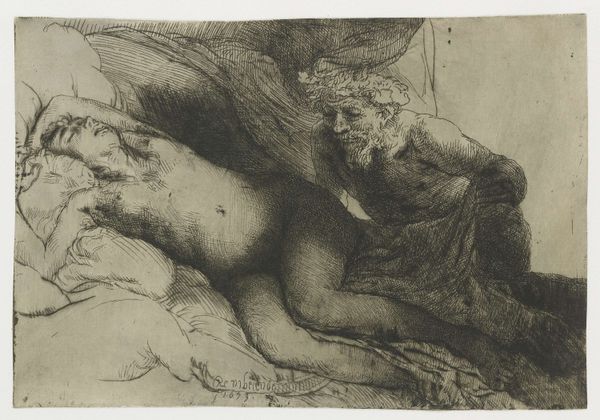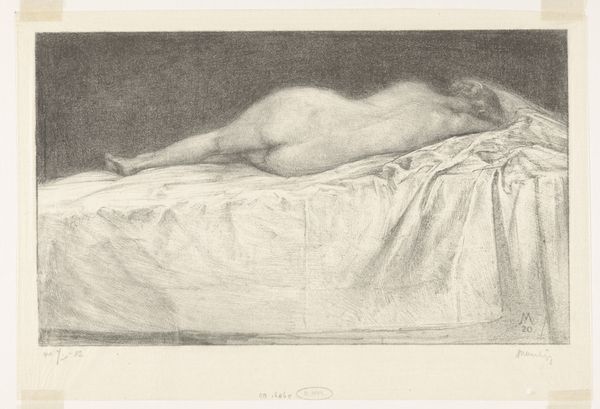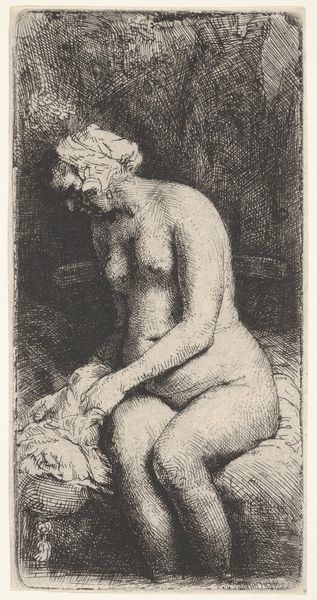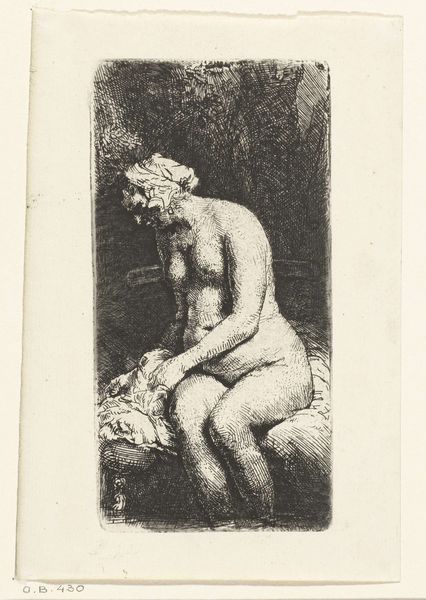
print, etching
#
baroque
# print
#
etching
#
figuration
#
nude
Dimensions: height 168 mm, width 262 mm
Copyright: Rijks Museum: Open Domain
Editor: Here we have "Reclining Female Nude," an etching dating somewhere between 1694 and 1737 by Pieter van den Berge. It's currently housed in the Rijksmuseum. The shading created by the etching is very interesting, and the overall composition evokes a classical aesthetic. What cultural stories can you unravel from this image? Curator: Well, first notice the placement of the water jug beside her. That specific symbol carries layers of meaning. It suggests purification, yes, but also domesticity and the feminine sphere, all tied to representations of purity and the nurturing aspects often linked to women in that era. The baroque style contributes to the emotional intensity of the piece. Does she appear to be a goddess to you, or does she represent a more 'earthly' being? Editor: I'm drawn to the expression on her face. It's almost melancholy, not the triumphant or seductive gaze one might expect. The figure's hand supports her head in a moment of quiet reflection; she has the classic Baroque, sensual body shape but with none of the self-importance we might assume from paintings of the time. Curator: Precisely. The melancholy invites a more internal reading. The "nude" here wasn't only a representation of the human form. Its power stemmed from the psychological space that opened up through poses, accessories, and gazes. The reclining nude creates dialogue around female identity and desire. Think about how classical nudes represented fertility, or even challenged traditional representations. Is she subverting or embracing classical themes? Editor: It's amazing to see how so much can be drawn from a single image! It makes me wonder about all the unsaid or hidden societal beliefs communicated through art. Curator: Yes, artworks hold both conscious and unconscious memories that we actively engage with when interpreting it, especially when analyzing pieces like this from a far removed period. Hopefully this exercise in ‘visual archeology’ empowers you to look for even more nuance!
Comments
No comments
Be the first to comment and join the conversation on the ultimate creative platform.
